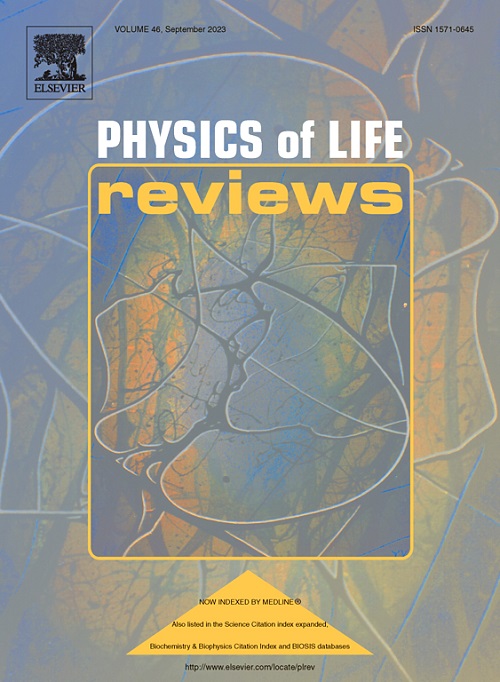Viscoelastic mechanics of living cells
IF 14.3
1区 生物学
Q1 BIOLOGY
引用次数: 0
Abstract
In cell mechanotransduction, cells respond to external forces or to perceive mechanical properties of their supporting substrates by remodeling themselves. This ability is endowed by modulating cells’ viscoelastic properties, which dominates over various complex cellular processes. The viscoelasticity of living cells, a concept adapted from rheology, exhibits substantially spatial and temporal variability. This review aims not only to discuss the rheological properties of cells but also to clarify the complexity of cellular rheology, emphasizing its dependence on both the size scales and time scales of the measurements. Like typical viscoelastic materials, the storage and loss moduli of cells often exhibit robust power-law rheological characteristics with respect to loading frequency. This intrinsic feature is consistent across cell types and is attributed to internal structures, such as cytoskeleton, cortex, cytoplasm and nucleus, all of which contribute to the complexity of cellular rheology. Moreover, the rheological properties of cells are dynamic and play a crucial role in various cellular and tissue functions. In this review, we focus on elucidating time- and size-dependent aspects of cell rheology, the origins of intrinsic rheological properties and how these properties adapt to cellular functions, with the goal of interpretation of rheology into the language of cell biology.
活细胞的粘弹性力学
在细胞机械转导中,细胞通过重塑自身来响应外力或感知其支撑基质的机械特性。这种能力是通过调节细胞的粘弹性特性赋予的,它支配着各种复杂的细胞过程。活细胞的粘弹性,一个从流变学改编的概念,表现出很大的空间和时间变异性。这篇综述的目的不仅是讨论细胞的流变性能,而且还澄清细胞流变性的复杂性,强调其依赖于测量的尺寸尺度和时间尺度。像典型的粘弹性材料一样,电池的储存和损失模量通常表现出与加载频率相关的强大的幂律流变特性。这种内在特征在细胞类型中是一致的,并归因于内部结构,如细胞骨架、皮层、细胞质和细胞核,所有这些都有助于细胞流变学的复杂性。此外,细胞的流变特性是动态的,在各种细胞和组织功能中起着至关重要的作用。在这篇综述中,我们专注于阐明细胞流变学的时间和大小依赖方面,内在流变特性的起源以及这些特性如何适应细胞功能,目的是将流变学解释为细胞生物学的语言。
本文章由计算机程序翻译,如有差异,请以英文原文为准。
求助全文
约1分钟内获得全文
求助全文
来源期刊

Physics of Life Reviews
生物-生物物理
CiteScore
20.30
自引率
14.50%
发文量
52
审稿时长
8 days
期刊介绍:
Physics of Life Reviews, published quarterly, is an international journal dedicated to review articles on the physics of living systems, complex phenomena in biological systems, and related fields including artificial life, robotics, mathematical bio-semiotics, and artificial intelligent systems. Serving as a unifying force across disciplines, the journal explores living systems comprehensively—from molecules to populations, genetics to mind, and artificial systems modeling these phenomena. Inviting reviews from actively engaged researchers, the journal seeks broad, critical, and accessible contributions that address recent progress and sometimes controversial accounts in the field.
 求助内容:
求助内容: 应助结果提醒方式:
应助结果提醒方式:


